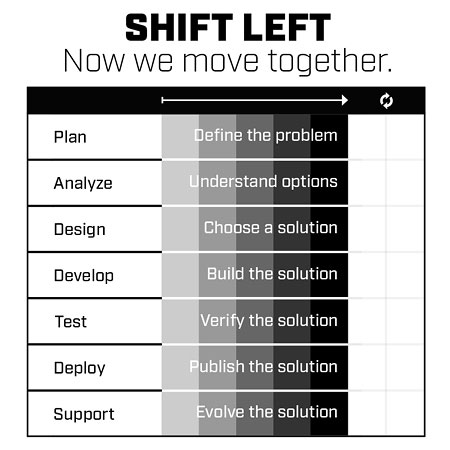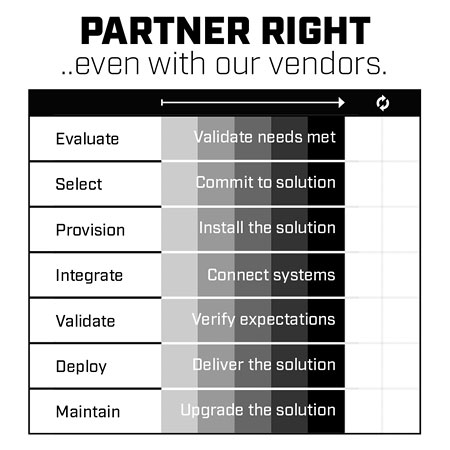
Shift Left
- Posted by :Wes Williams
- Date :24 Oct, 2021
- Category : Methodology
Software delivery has evolved.
Traditional software development phases are well known. Departments and job roles were built around them. Specialties led to silos and bottenecks in the delivery process. The paradigm has shifted as cloud platforms accelerate system delivery and raise customer expectations.

It is now easier to deploy a fully provisioned server than patch an old one. Instant creation of any system configuration enables testing, deployment, and security concerns to be addressed at every stage of a project. Teams are now organized by line of business instead of job function to act on all functions in unison.
The Build Approach
Let’s consider how systems are built among cross functional teams. What does this require and enable for software professionals? More importantly, what does it mean for businesses?

Shift Left is an industry buzzword for redistributing responsibility and expectations in software delivery. The same aspects of software development apply but integrate rather than transition forward. The physical representation of this model is a stack at the far left of the traditional software delivery model. Every aspect of the system is considered from the start. Addressing every stakeholder’s concerns daily means correcting course sooner. Budgets and timelines will benefit. Customers will get better products faster!
The Buy Approach
Development is not alone in this change. Vendors are aligning with all project stakeholders earlier. Staff and vendors blend into a single team to understand and solution for the business.

Shift Left also applies to vendors. How businesses engage with technology vendors must change. Treating them like partners achieves better results than operating solely by a contract. Solutions should be delivered according to how a business engages customers rather than a vendor release cycle. While a purchased solution is often chosen to reduce burden or dependency on staff, the combination of vendor technology and staff insight achieves better outcomes for the business. An aligned approach delivers solutions to customers faster!
More articles coming soon.